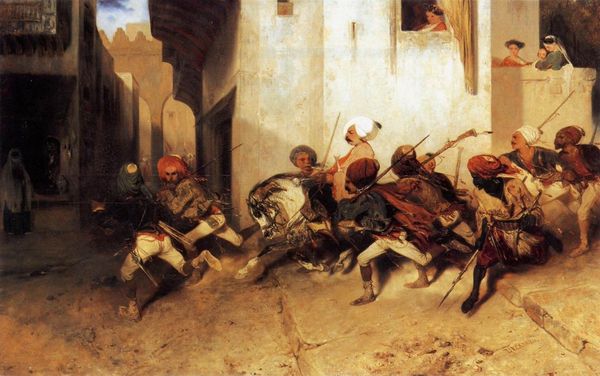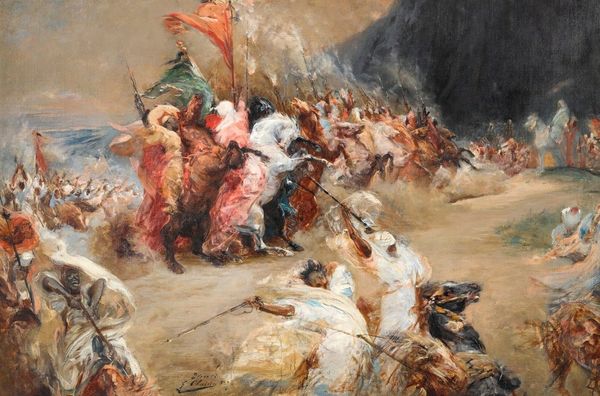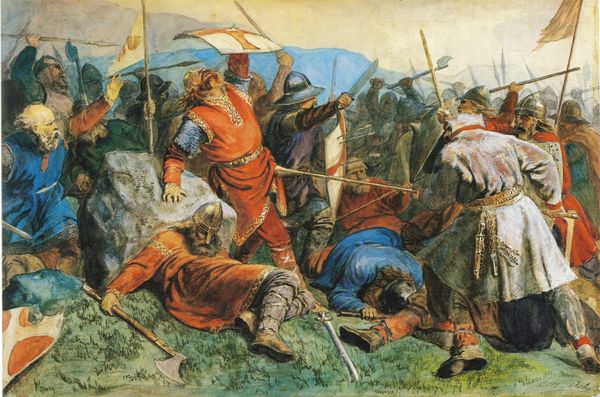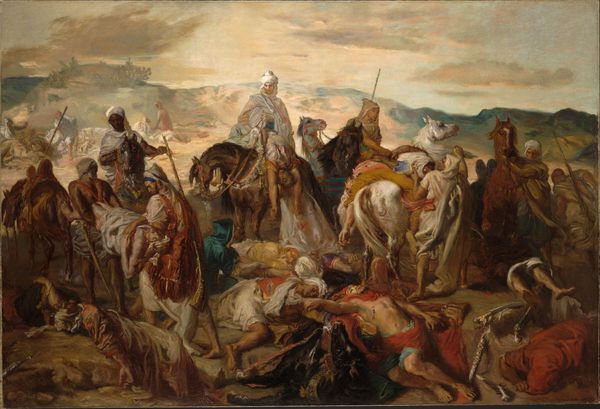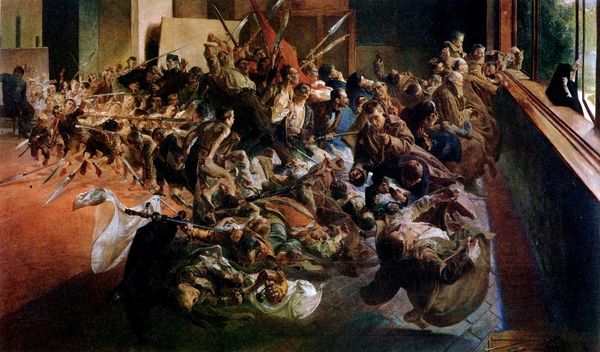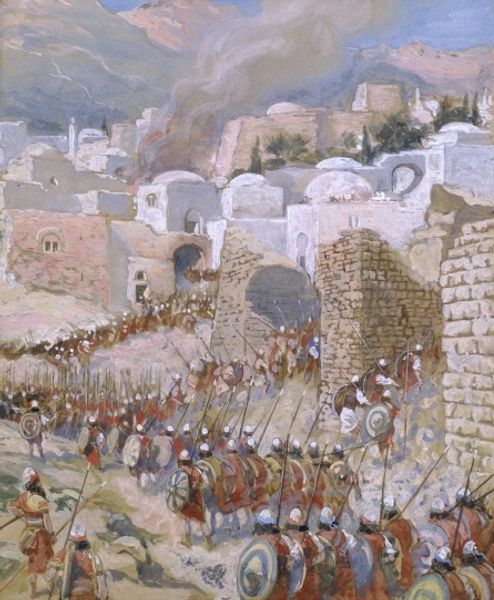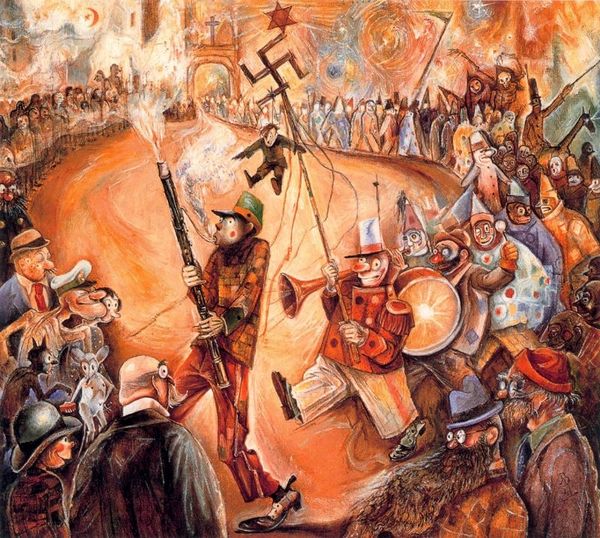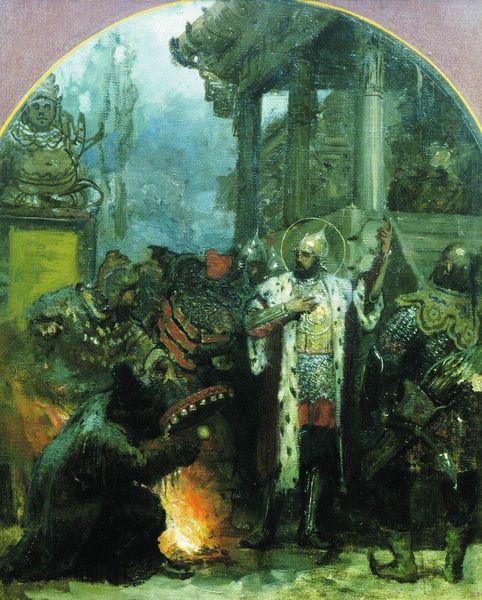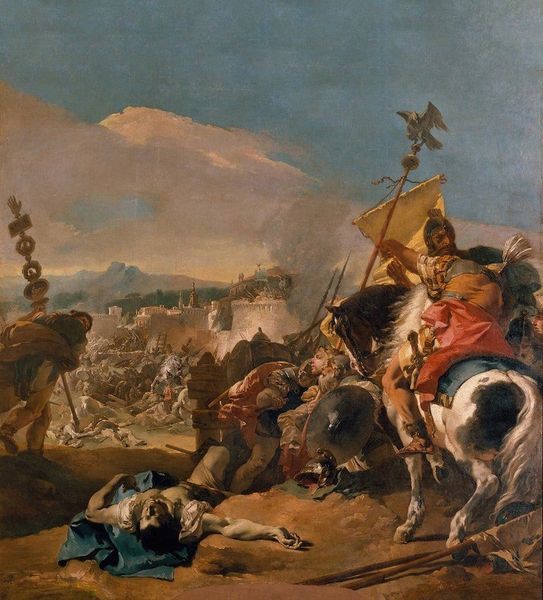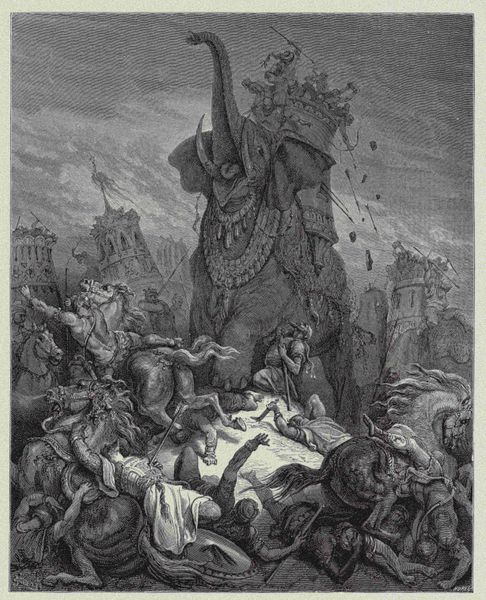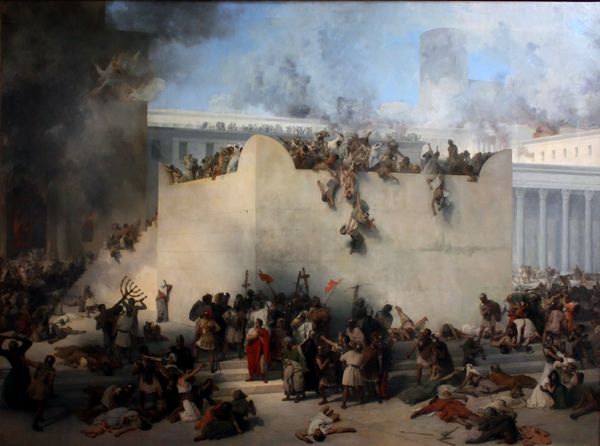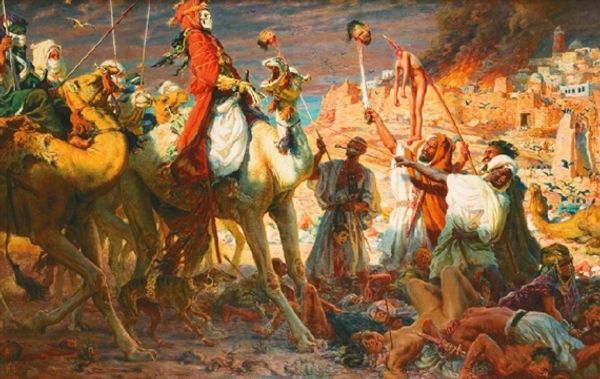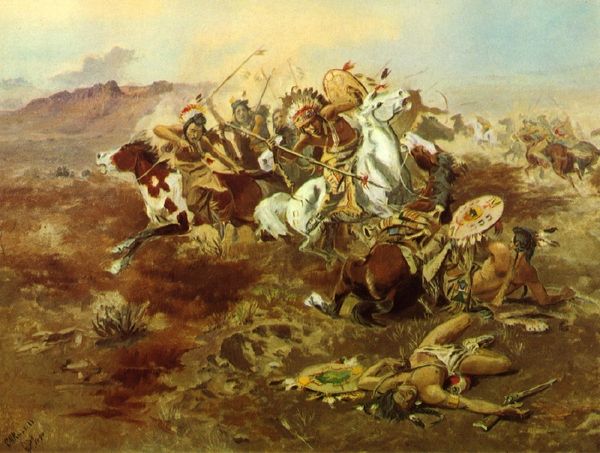
L'entrée Du Sultan Mehmet Ii À Constantinople Le Vingt-neuf Mai 1453
0:00
0:00
#
sculpture
#
possibly oil pastel
#
oil painting
#
derelict
#
fluid art
#
underpainting
#
urban art
#
painting painterly
#
watercolor
#
ruin
Copyright: Public domain
Curator: Just look at the palpable drama frozen within this image! We're observing what's known as "L'entrée Du Sultan Mehmet II à Constantinople Le Vingt-neuf Mai 1453," attributed to Jean-Joseph-Benjamin Constant. It’s quite the spectacle. Editor: It is... Visually overwhelming, frankly. A dense mass of figures, intense color, and then that immediate foreground of carnage. The scene definitely communicates conquest and power but does so with a rather brutal honesty. Curator: Absolutely. I see this grand entrance staged through very specific symbolism. The triumphant sultan framed by that arch, the flags held aloft. The crescent moon symbolizes the rising power, doesn’t it? Even his placement above the throng feels like a calculated representation of dominance, recalling centuries of artistic precedents. Editor: And let’s not ignore what he's triumphing over! The history of the city prior to this moment. Consider that this painting speaks to a pivotal power shift and marks a distinct cultural end point. Curator: Indeed! The fall of Constantinople to the Ottomans in 1453 represents a monumental change in the flow of power. And consider that the painter creates a powerful statement using light and darkness. The hope and future being brought with the Sultan are immediately thrown against the tragic fate of the vanquished citizens on the floor, who fade into the ground. The scene is not romanticized like so many similar historical images from the period. Editor: What strikes me, thinking about art in the public sphere, is the narrative Constant is choosing to highlight here. The focus isn't just on the event itself, but the aftermath. Is this commentary or historical record? Perhaps even an indictment of power, or at least an attempt to provoke reflection on its human cost? Curator: I find it captivating how the composition funnels the eye directly toward Mehmet II, but your point is well taken. The weight of the scene truly hangs in that devastated foreground. It is a powerful use of visual elements, reflecting perhaps a more modern and skeptical view of historical grand narratives. Editor: The artist asks viewers, even centuries later, to look closely at this historical point, to confront not just the victory, but its grim shadow. The painter acknowledges this was built at immense human cost. That's a pretty nuanced viewpoint for what might initially seem like a standard celebration of conquest. Curator: A potent testament to the ability of art to question power, not just glorify it! Editor: Exactly! It's definitely left me with a renewed appreciation for historical reflection.
Comments
No comments
Be the first to comment and join the conversation on the ultimate creative platform.
